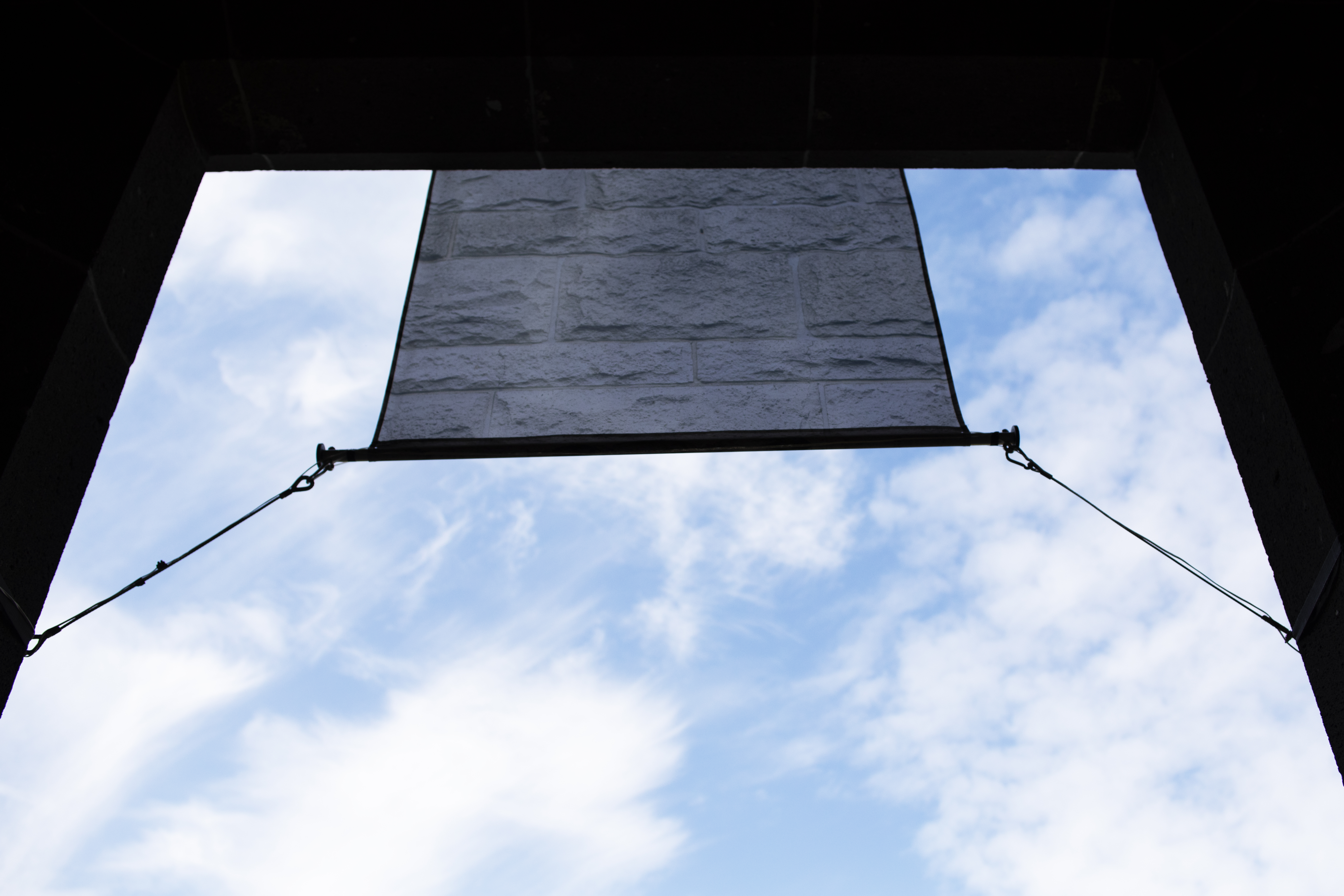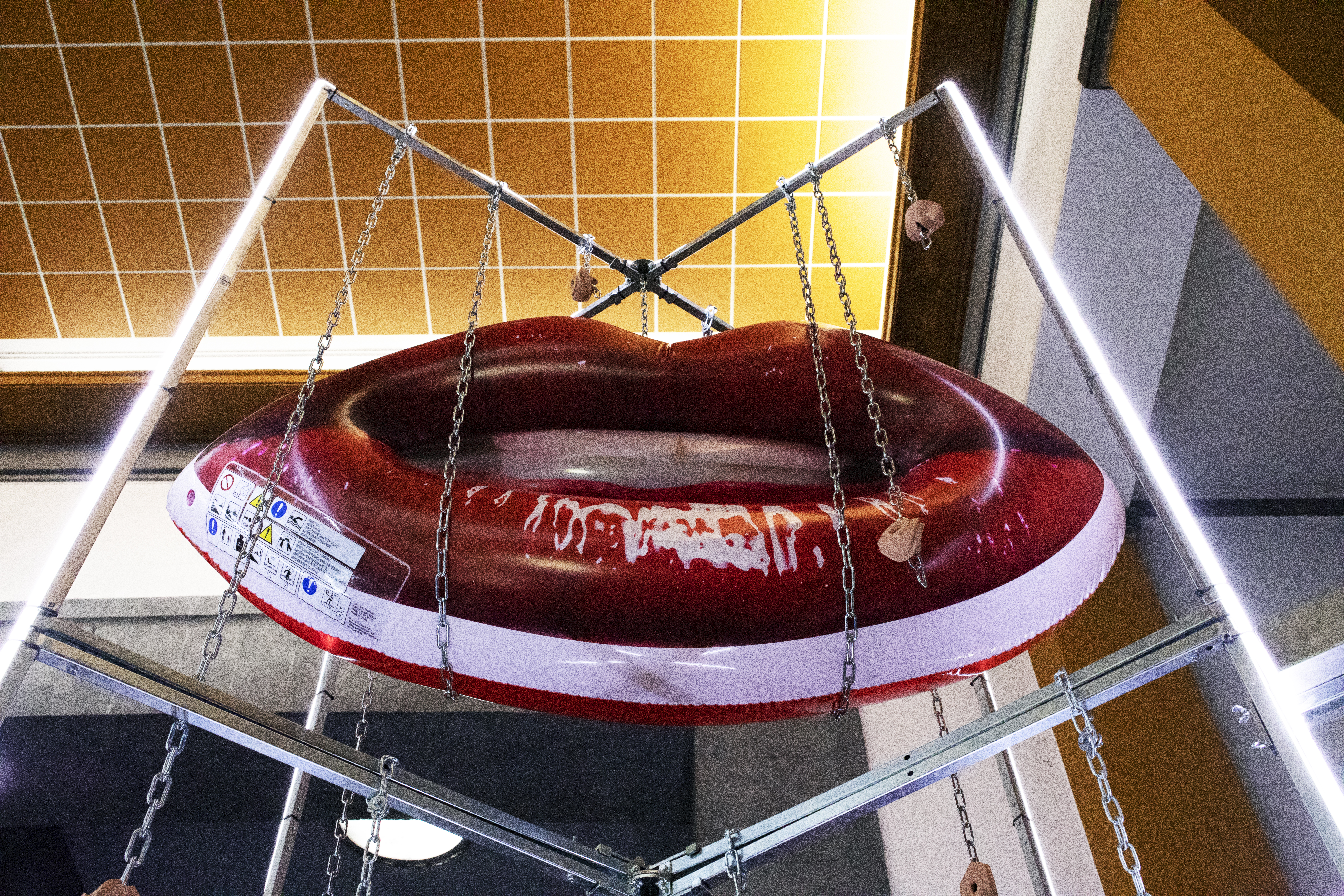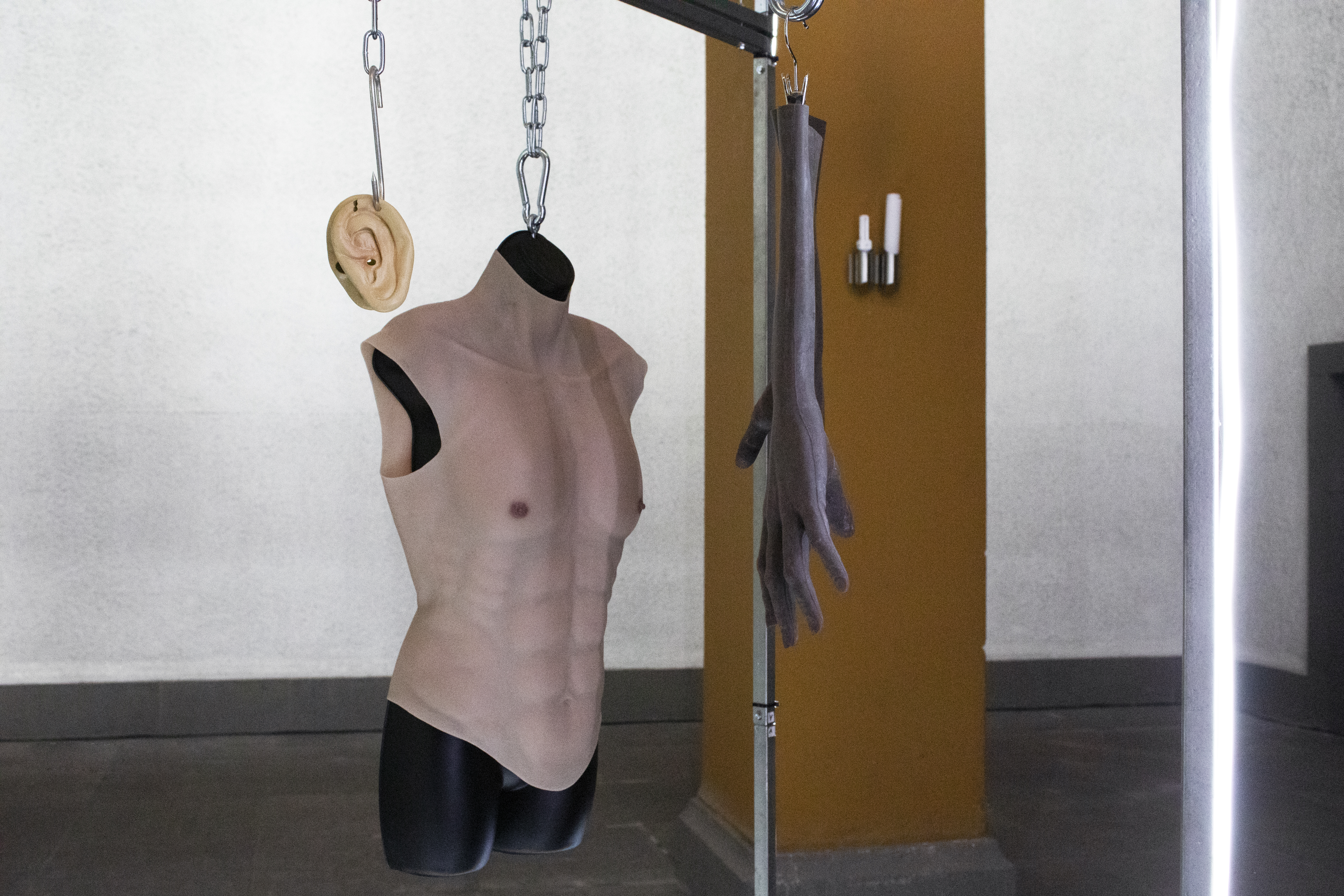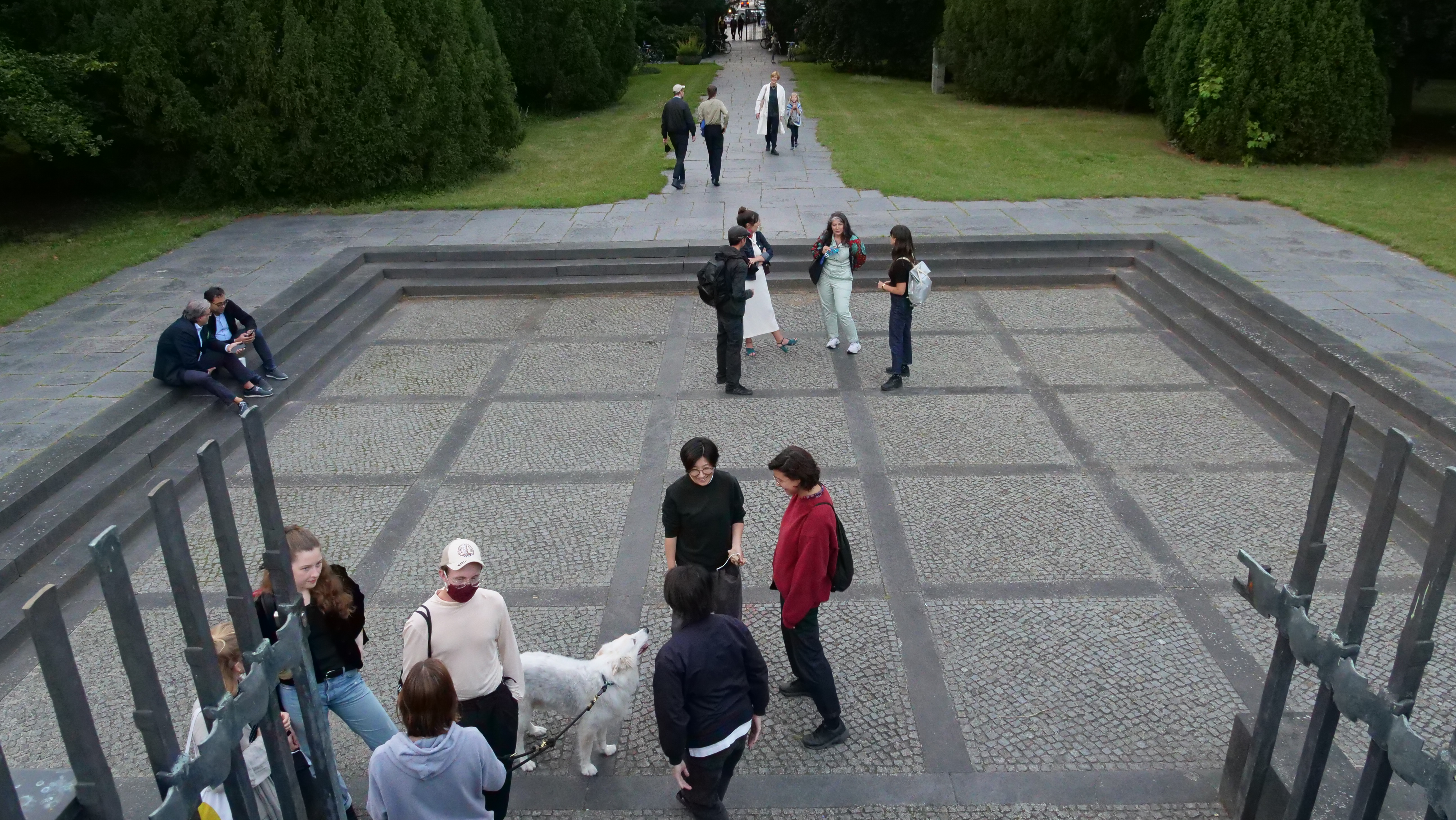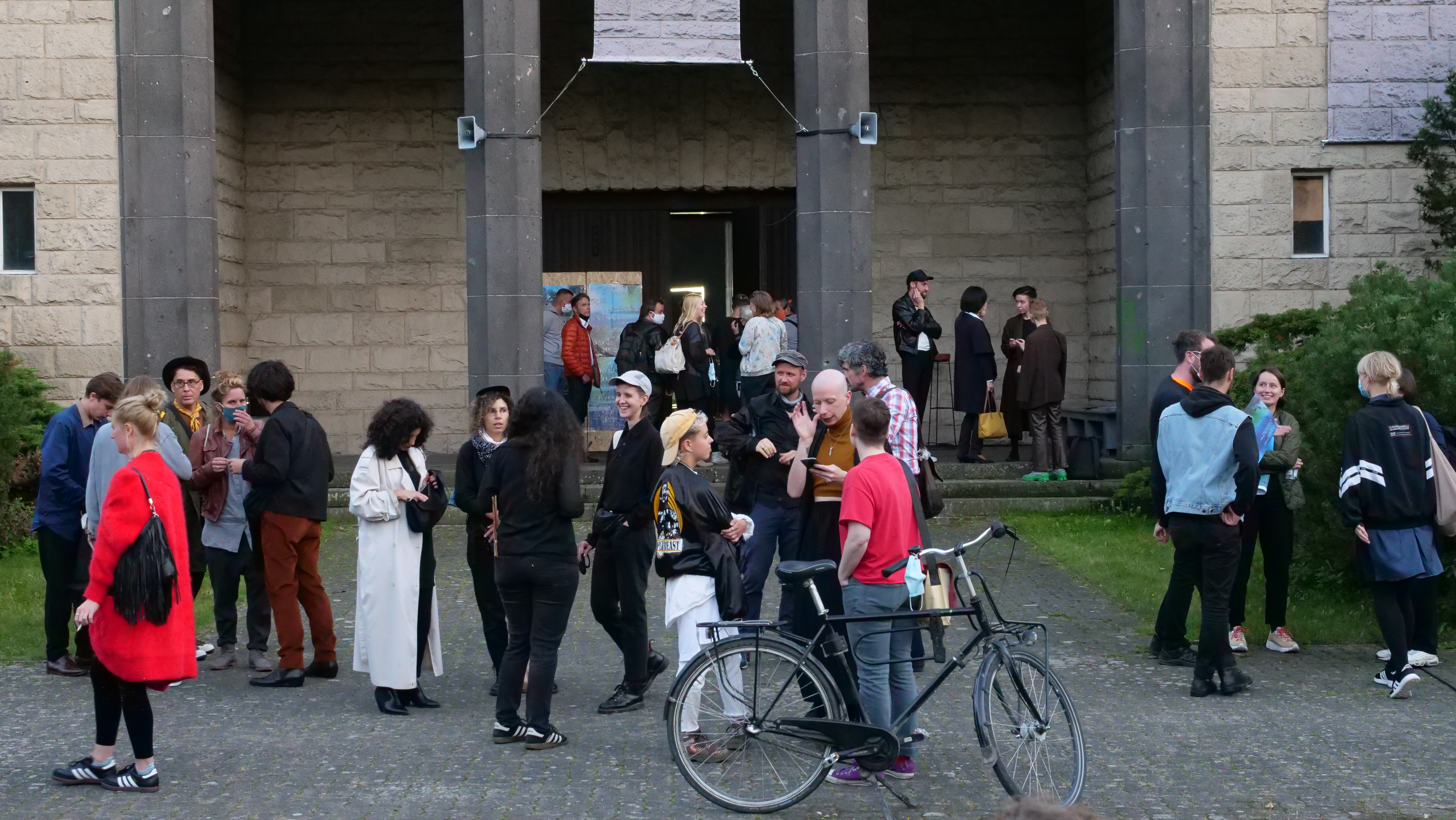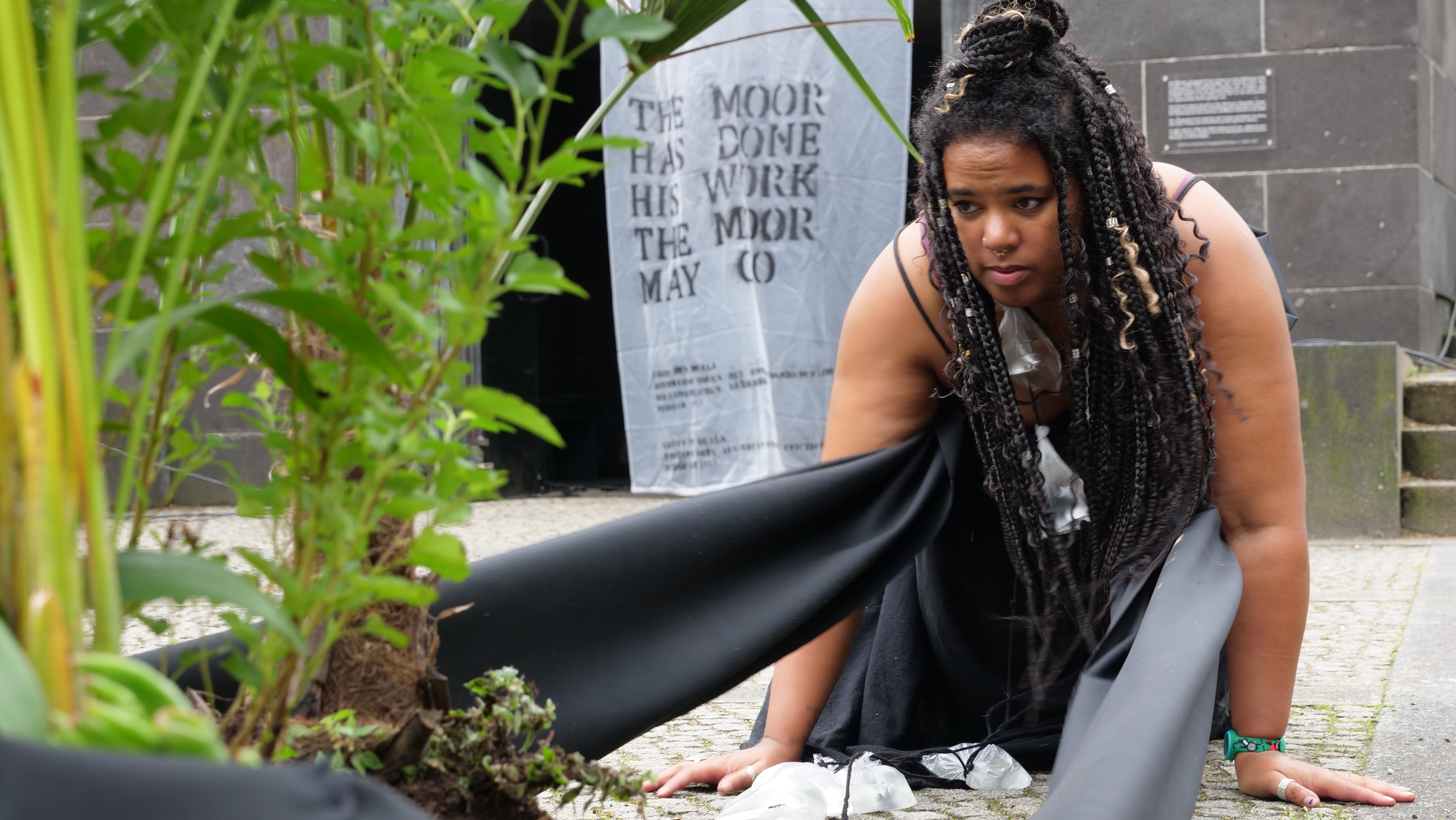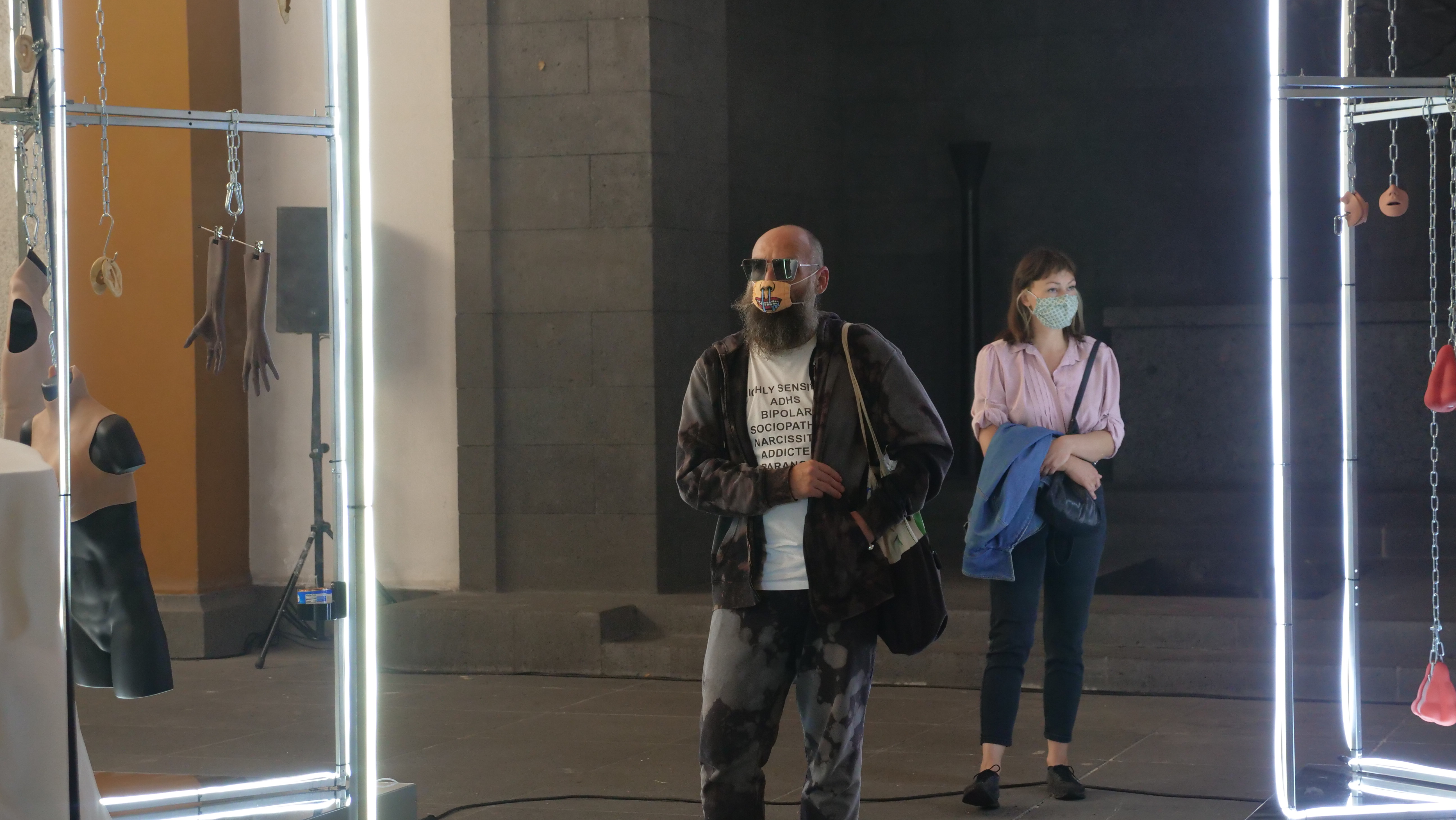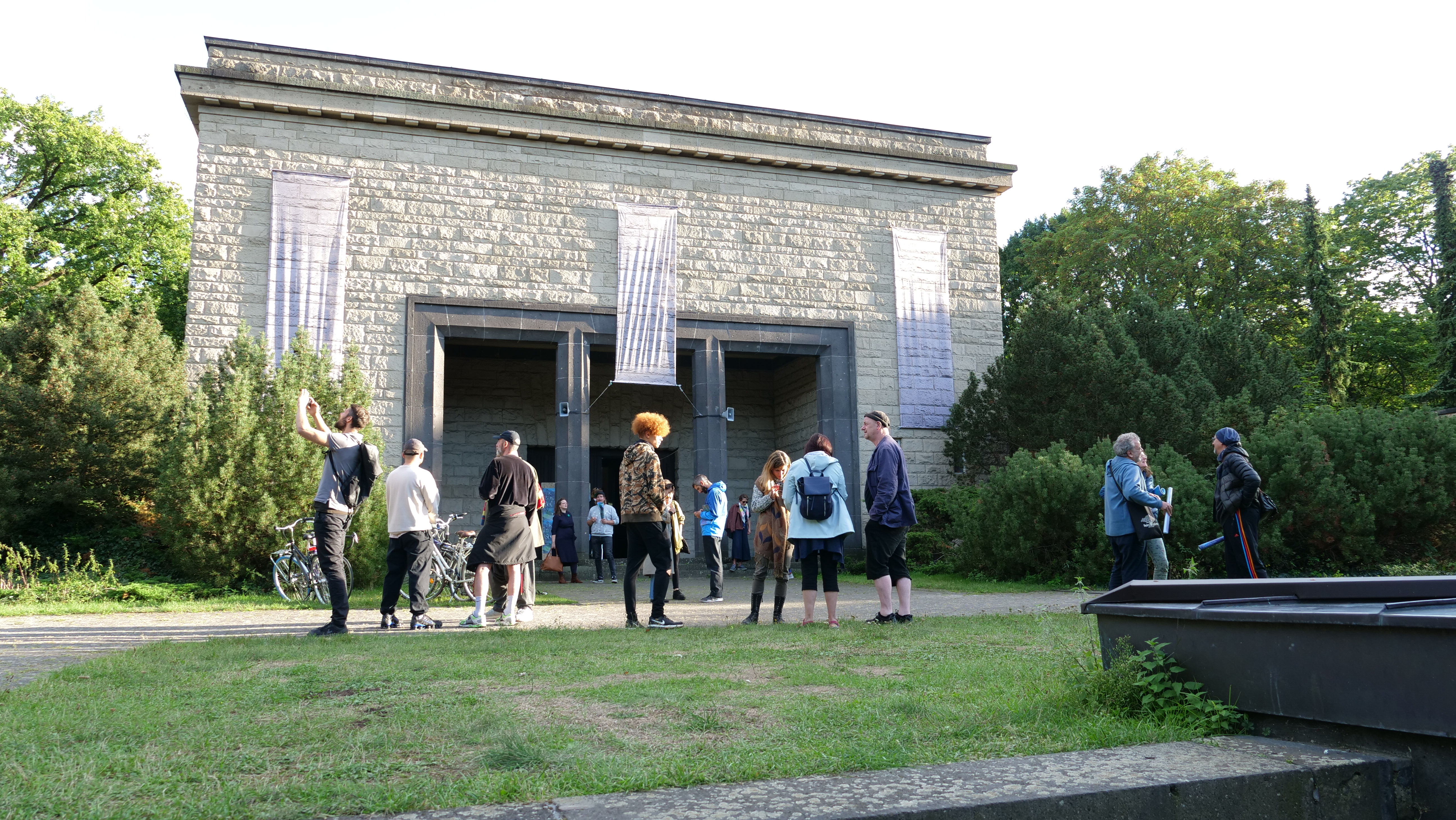A Handful of Dust (2020)
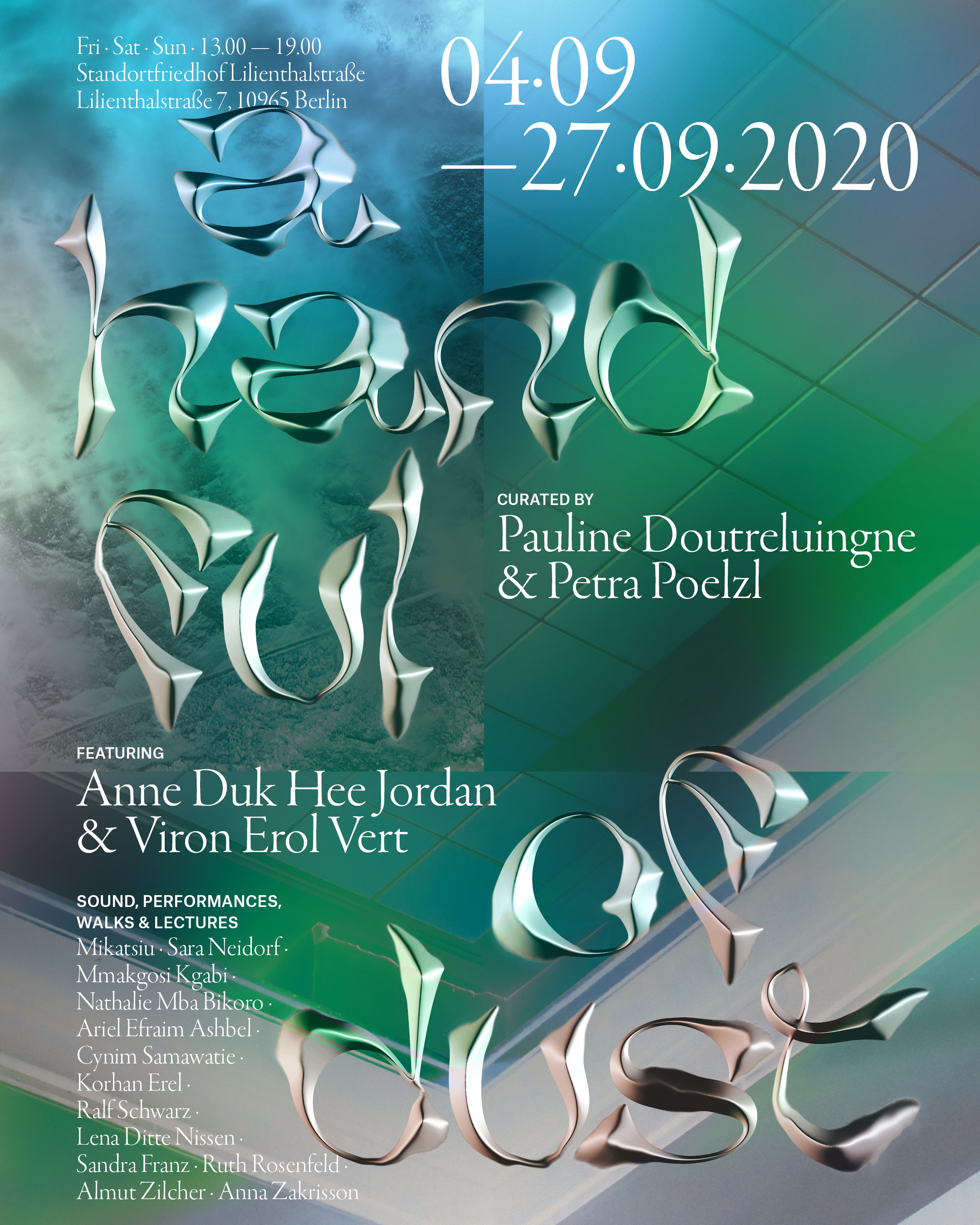
Artists: Anne Duk Hee Jordan, Viron Erol Vert
Musicians: Mikatsiu, Sara Neidorf, Mmakgosi Kgabi, Cymin Samawatie, Korhan Erel, Ralf Schwarz
Lectures: Sandra Franz, Dr. Anna Zakrisson
Communication: Eva Scharrer
Accounting: Kathrin Pohlmann
Graphic Design: Studio Hold
Venue: Ehrenhalle at Standortfriedhof Lilienthalstraße, Lilienthalstraße 7, 10965 Berlin
www.ahandfulofdust.com
A Handful of Dust is supported by the Senatsverwaltung für Kultur und Europa.
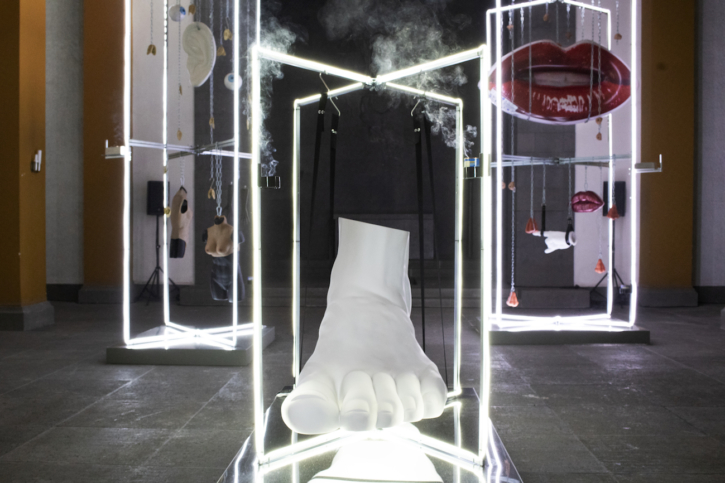
Departing from the so-called “Ehrenhalle” (Hall of Honour), built between 1938 and 1941 as a “Temple of the Fatherland” at the site of the Lilienthalstraße cemetery in Berlin-Neukölln, A Handful of Dust deals with the topic of fear within historical socio-political contexts. The invention of social fear has always been a reliable tool in the process of gaining power and occupies the core of National Socialist structures and its colonial history. The creation of the concept of the enemy is used to fuel fear, which serves to assemble and expand political and social power structures. More recently, instead of a constructive and strategic approach to issues such as climate change, migration, and technological revolutions, populism is fanning the flames of insecurity in broad sections of society. Emotionalization in lieu of leadership is nurturing the grounds for widespread fear to ripen and flourish.
A Handful of Dust understands itself as a questioning of black-and-white juxtapositions and seeks ways of thinking and acting outside of these extremes in order to make visible the complexity of historiography. The project aims to counter the advancing polarization and social division through a collective search for nuance, variation and lyricism.
Together with the artists Anne Duk Hee Jordan and Viron Erol Vert, the curators Pauline Doutreluingne and Petra Poelzl have developed an artistic performative, and discursive space of experience, revealing strategies for deconstructing hegemonic systems of thought and making multiform imaginations and rebellious narratives tangible, visible, smellable and audible.
In addition to a collaboratively developed sculptural intervention in the Ehrenhalle located at the center of the cemetery site, the area surrounding the hall will host various sonorous, discursive, and performative formats, progressing across four consecutive weekends in September 2020. The curators, artists, performers, scientists, and musicians will consciously enter this “foreign body” inscribed with an architecture of contentious history, and aim to open up pluralistic spaces of discourse through reflective examination on the embodiment of fear.

LOCATION: CEMETERY LILIENTHALSTRASSE 7
The Ehrenhalle was built by order of the General Building Inspector for the Reich Capital, Albert Speer, and completed by the architect Wilhelm Büning.Originally, the hall served as a place of worship for fallen German soldiers – an expression of the timeless glory of the thousand-year-old Third Reich. It is surrounded by a cemetery, which was built for the Wehrmacht. Today, 4935 victims of the Second World War rest there in individual graves: soldiers, civilians, bomb victims. Furthermore, countless war dead rest in collective graves over an area of 1432 square meters. Since 2018, part of the cemetery is also used for Islamic burials. The Ehrenhalle (Hall of Honour) at the cemetery site Lilienthalstraße is a place steeped in history, build upon an ideology that has seeming been overcome, but whose mechanisms still carry a shattering power, especially today.


